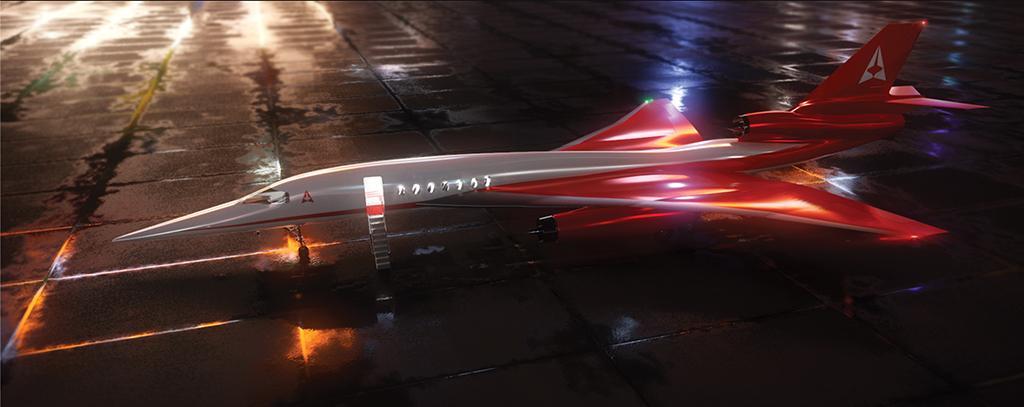
Aircraft developer Aerion Supersonic confirms that the COVID-19 pandemic has forced it to delay development of the AS2 supersonic business jet, pushing first flight back from 2024 to 2025, but says the overall program otherwise continues as planned.
Details of the slide, revealed at the American Institute of Aeronautics and Astronautics Aviation virtual forum on June 17 by Aerion CEO Tom Vice, follow warnings from the company earlier this year that it was evaluating possible pandemic-related changes to the schedule. Although Aerion initially hoped to make the first flight of the AS2 by the end of 2024, Vice told Aviation Week in April “we’re likely to have to slow things down and we’re going through that re-planning now.” (AW&ST April 20-May 3. p.50)
In line with the revised schedule Aerion says it has “taken proactive measures on reprioritizing workflow to maintain continuity on the AS2 program,” resulting in slowdowns on work packages from suppliers and program partners. Commenting on reports in the Air Current that two key partners, Boeing and Spirit AeroSystems, have disbanded their AS2 engineering teams, the company says these moves are “temporary” and that preliminary design review, which involves input from all partner suppliers, is still scheduled for 2021.
In addition to Boeing and Spirit, the partnerships with which were announced in February 2019, other team members and AS2 suppliers announced to-date include engine provider GE Aviation, Honeywell, Safran, GKN Aerospace and subsidiary company Fokker Technologies. Others include Aeronnova, Eaton Aerospace, Parker Aerospace, Potez Aeronautique and Siemens Digital Industries Software.
Aerion adds that plans to break ground on the company’s new Melbourne, Florida headquarters and manufacturing site also remain on course for later this year. However, it remains to be seen whether the company’s original plan to hold the event in July will still occur on schedule. The $300 million site, covering 60 acres, will be completed over a phased development plan that is expected to generate at least 675 jobs in the state by 2026.





